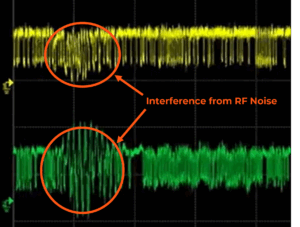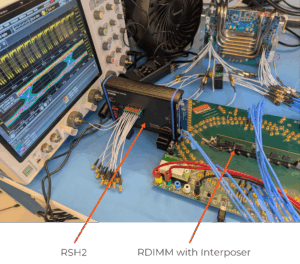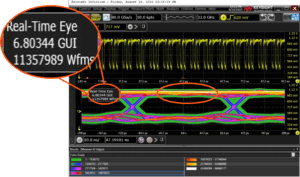
Industry Challenges
LPDDR6 Is Coming: Are You Ready?
6 min

Have you ever experienced having to probe a high-speed digital signal on the scope in the presence of electromagnetic interference? You’re often wanting to catch a fleeting instance when the noise is not present, and that fleeting instance sometimes never seems to come! This can be very frustrating, especially if your measurement requires sophisticated triggers or some kind of long-term measurement.
The challenge with interference is largely because the probe tips act like small antennas. So, they pick up the RF noise that is inevitably present in your testing environment. This RF noise could be due to WIFI, cellular networks, or even a nearby FM radio station. Figure 1 shows an example of how this interference can look. As can be seen, with the latest high-speed standards, the noise could even be larger than the signal – and this noise is completely artificial and is only present because of the probe.

In this article, we asked ourselves, can we probe a DDR5 RDIMM for 24 hours continuously? Is that even possible? Read about our approach.
We used one of Introspect’s latest products, the Integrated-Tip Interposer along with our highly-acclaimed RSH2 Remote Sampling Head. Then, we inserted it on a commercial DDR5 RDIMM, and we connected the RSH2 output to a real-time oscilloscope with persistence mode enabled.
Here are some photos of what this looks like:

But first, what is this Integrated-Tip Interposer solution? This all-new interposer is an interconnect structure that sits underneath the pads of an assembled memory device. It provides direct access and a through path for the signals, while also generating a copy of the signal that is fed to the tool being used for analysis. Specifically designed to preserve signal integrity and maximize immunity to external noise, this interposer can be used to probe sensitive DDR, LPDDR, and GDDR signals, and it can even be applied to NAND flash memories and UFS storage implementations. When combined with the RSH2, the result is an ideal non-proprietary, high-performance, general-purpose probing solution. See Figure 3 for a close-up of the Integrated-Tip Interposer with some probe cables attached.

So, finally, what happens when you probe the RDIMM for over 24 hours? You get barely noticeable noise! As seen in Figure 4, the open eye indicates a high signal integrity while the narrow green band shows low noise due to high immunity from electromagnetic interference. Over 6 billion UI’s passed over the course of 24 hours and the signal remained extremely clean.

To see the live demo of this setup, watch the video below.
Do you have any questions about this new approach to oscilloscope probing? Contact us at info@introspect.ca.
